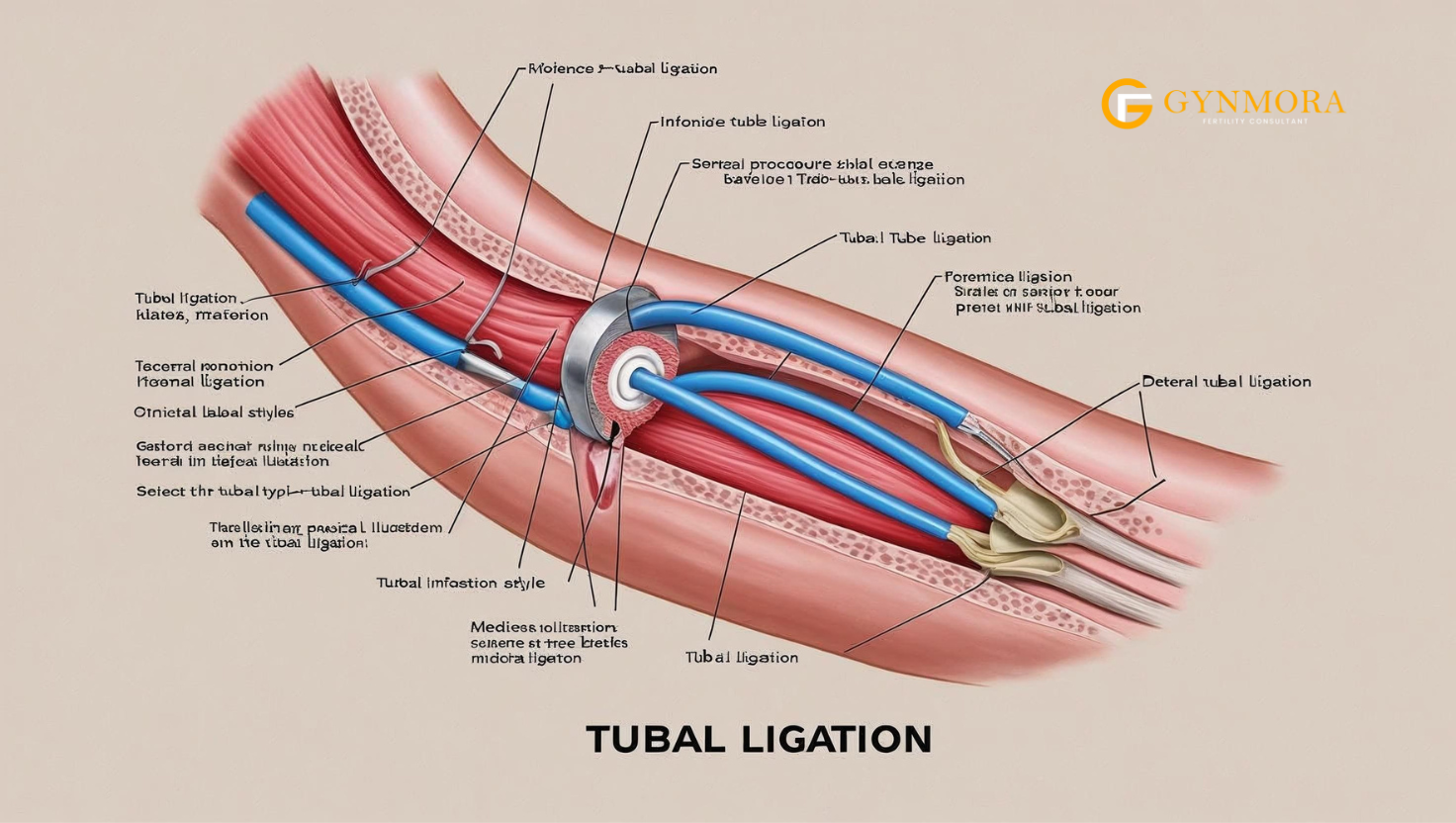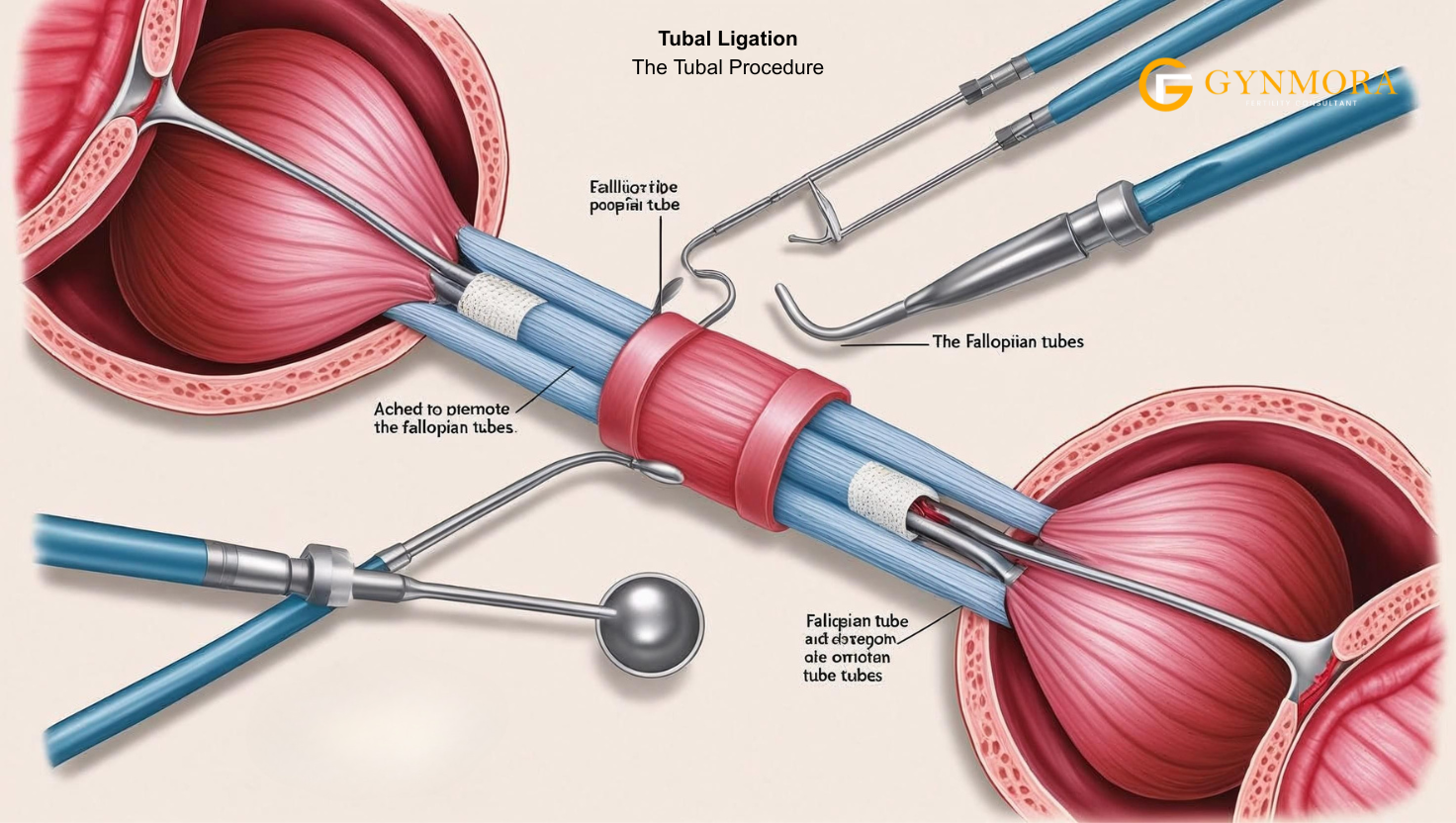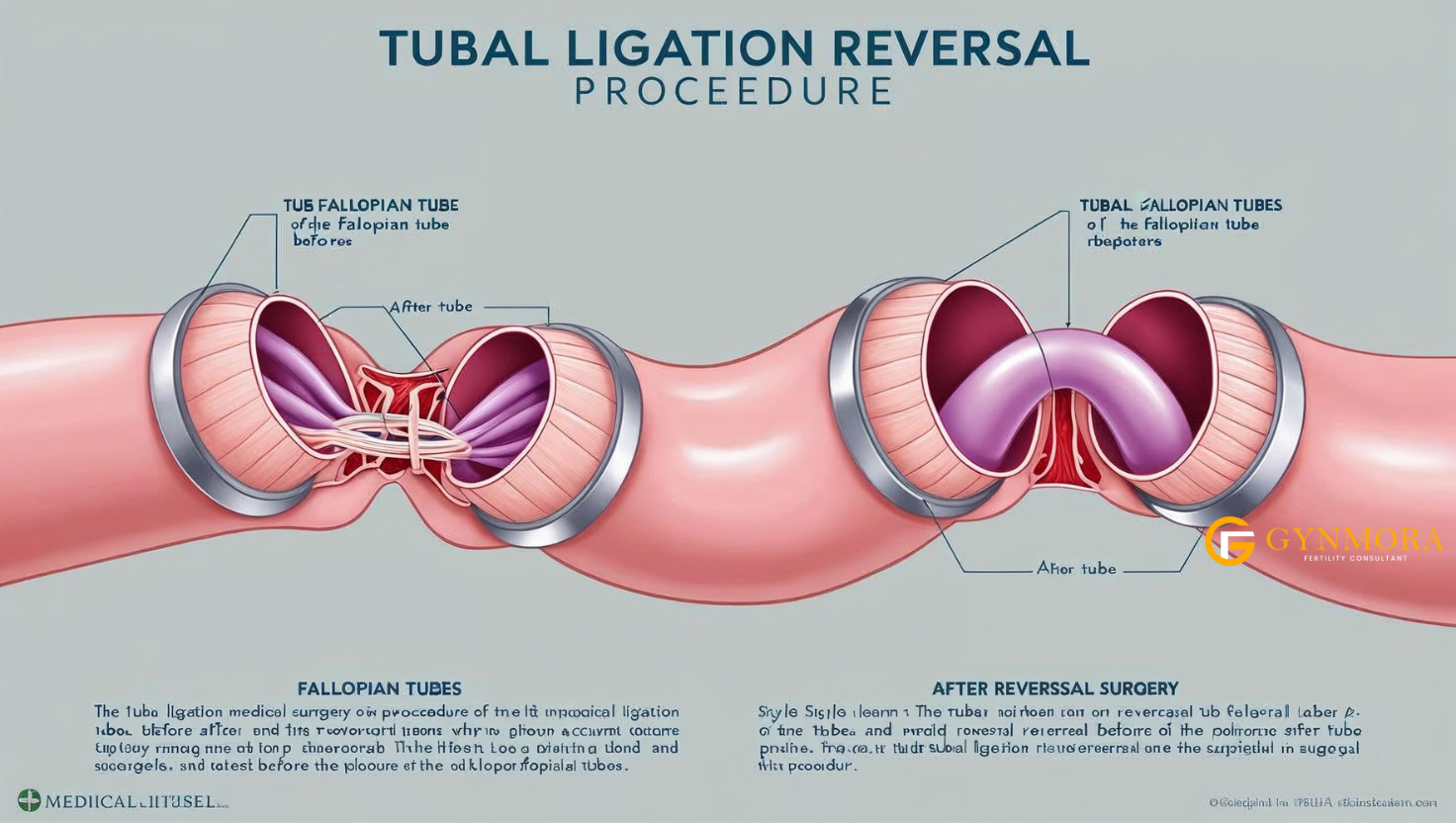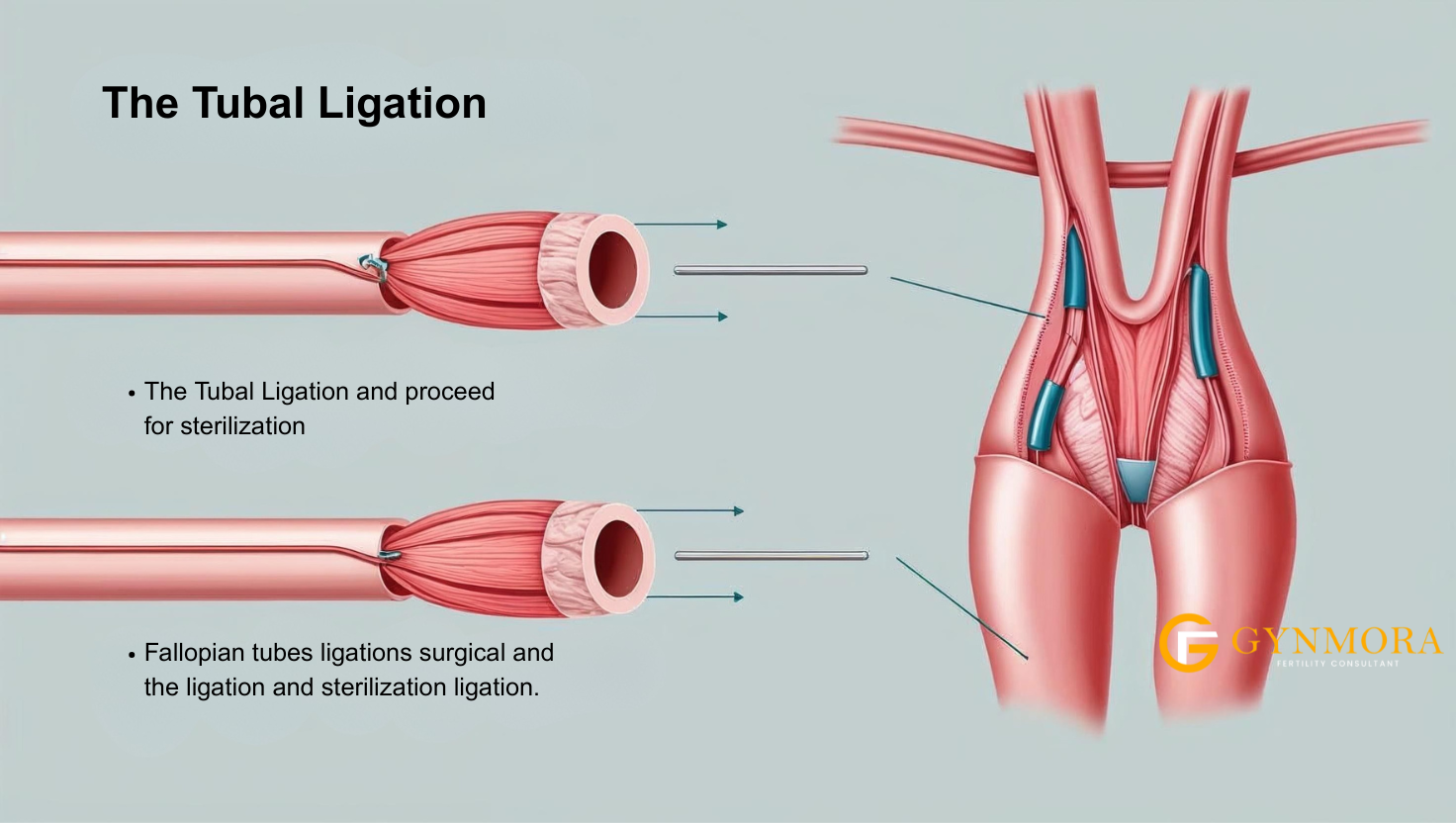Can You Untie Your Tubes?
Hey there! Wondering if Can you untie your tubes? If you’ve had your tubes tied but now want another baby, you’re not alone. Lots of people ask, “Can you untie your tubes?” The answer is yes—it’s possible with a surgery called tubal ligation reversal. But is it the right move for you? At GYNMORA, we’re here to help you figure it out. We connect you with doctors online or in person. This article breaks it down super simply: what the surgery is, if it works, the risks, and other options like IVF. Let’s dive in together!
What Is Tubal Ligation?

Tubal ligation is just a fancy way of saying “getting your tubes tied.” It’s a surgery to stop you from getting pregnant forever. Doctors block your fallopian tubes so eggs can’t get to your uterus. It works really well—less than 1% of women get pregnant after. People usually do it when they’re sure they’re done having kids. But what if you change your mind? That’s when you start asking, “Can you untie your tubes?”
Can You Untie Your Tubes? How It Works
Good news—you can try to untie your tubes! It’s called tubal ligation reversal. Surgeons fix your tubes so eggs can move again. It’s not like untying a knot, though. They use tiny tools to sew the tubes back together. At GYNMORA, we’ve seen lots of women try this to get pregnant naturally again.
What Happens During Surgery?
The surgery takes 2-3 hours, and you’ll be asleep. The doctor makes a small cut near your belly button and fixes the tubes. Afterward, you’ll rest for a couple of weeks to heal up.
Will It Work? Success Rates

So, will you have a baby after this? Maybe! Success rates are between 40% and 90%. Here’s what matters:
- How they tied your tubes: Clips or rings? Easier to fix (up to 90% success). Cut or burned? Trickier (around 40%).
- Your age: Under 35? Better odds. Over 40? It’s harder because your eggs age too.
- Tube length: You need 4-5 cm of healthy tube left.
At GYNMORA, our doctors can check your chances. One study showed 70% of women under 30 with enough tube length got pregnant in a year. Pretty cool, right?
Risks to Think About
Surgery isn’t risk-free. Here’s what could happen:
- Infection or bleeding: Not common, but it’s possible.
- Ectopic pregnancy: This is when the baby grows in the tube, not the uterus. It happens in 5-10% of pregnancies after reversal, so it’s serious.
- Feeling weird after anesthesia: You might feel dizzy or sick for a bit.
No stress, though—GYNMORA’s team keeps you safe and explains it all.
Other Options: What About IVF?
Not sure about surgery? There’s another way! IVF (in vitro fertilization) skips your tubes completely. Doctors take your eggs, mix them with sperm in a lab, and put the embryo in your uterus. It’s great if your tubes are too messed up or you’re older. IVF costs about $12,000 per try, but it can work up to 50% of the time for younger people. At GYNMORA, we do both reversal and IVF—your choice!
Reversal or IVF: What’s Better?
- Cost: Reversal is $5,000-$10,000 once. IVF is $12,000 each try.
- Natural vibes: Reversal lets you get pregnant naturally. IVF is lab-made.
- Speed: Reversal takes months to heal. IVF can be quicker.
Still confused? We can chat about it.
How to Decide What’s Right
Thinking about untying your tubes is huge. It’s not just surgery—it’s your future! Ask yourself:
- How old am I? Younger works better.
- Can I pay for it? Insurance doesn’t usually help with reversal.
- Do I want kids soon?
At GYNMORA, we’ve got your back. Our doctors look at your health and dreams. Talk to us online or in person—no judgment, just help.
Can You Have a Baby After Tying Your Tubes? Real Moms Share Their Stories
Wondering if you can still have a kid after getting your tubes tied? You totally can! There’s a surgery called tubal ligation reversal that’s helped tons of women become moms again. I dug up some real stories from women who went through it, and they’re so inspiring. Plus, I’ll share a few things you should know if you’re thinking about it.
5 Cool Stories from Moms Who Had Tubal Ligation Reversal
These stories are from real women who got their tubes untied and had babies. They’ll make you smile and maybe give you hope!
1. Tania from Pennsylvania – Four More Kids!
Tania got her tubes untied and had four more kids (born in 2015, 2017, 2019, and 2021). The craziest part? She got pregnant with her fourth at 39, just a month after trying. Talk about a happy surprise!
2. Denita from South Carolina – Starting Over at 40
Denita already had four kids when she got her tubes tied. After her husband passed away, she fell in love again and wanted a baby with her new guy. At 40, she had tubal ligation reversal and got pregnant! Her story’s like a movie.
3. Dawne – A Baby at 46
Dawne’s story is wild. She got her tubes untied and had a baby all on her own at 46. If you’re in your 40s and dreaming of another kid, this one’s for you.
4. Michelle – Dreaming Big at 51
Michelle was 51 and engaged when she started thinking about having a baby, even though she got her tubes tied 18 years ago. She checked out tubal ligation reversal. It’s awesome to see someone chase their dreams at any age!
5. Donna from Australia – A Kid After 12 Years
Donna had her tubes tied for 12 years before she said, “Let’s try reversal.” Eight months later, she was pregnant! She had a rough time with a complication called placenta percreta that needed surgery, but her story still shows what’s possible.
What You Need to Know About Tubal Ligation Reversal

Thinking about getting your tubes untied? Here’s the deal:
- Will It Work? About half to three out of four women get pregnant after the surgery. It depends on things like how old you are, how your tubes were tied, and if there’s enough tube left.
- Is It Risky? There’s a small chance of something called an ectopic pregnancy, where the baby grows in the wrong spot. Going to the doctor a lot helps keep things safe.
- What Else Can You Do? If reversal doesn’t sound right, there’s IVF (where they help you get pregnant in a lab). A 29-year-old named Mackenzie McKee, who has Type 1 diabetes, picked IVF because it worked better for her.
Costs and Recovery
Reversal costs $5,000 to $10,000, depending on your doctor and city. Recovery takes 1-2 weeks to feel normal, but no heavy lifting for a month. GYNMORA has payment plans and hooks you up with awesome doctors.
Frequently Asked Questions (FAQ) About Tubal Ligation Reversal in 2025
Got questions about whether you can untie your tubes? We’ve got answers! Here are the top questions people are asking in 2025 about tubal ligation reversal, answered clearly to help you decide what’s next. At GYNMORA, we’re here to guide you—online or in person!
1. Can You Untie Your Tubes in 2025?
Yes, you can try to untie your tubes through a surgery called tubal ligation reversal. It reconnects your fallopian tubes so eggs can travel to your uterus again. Success depends on your age, the type of ligation (clips are easier to reverse than burns), and tube health. In 2025, advanced microsurgery techniques have improved outcomes, with pregnancy rates ranging from 40-90%. Want to know your odds? Book a virtual consult with GYNMORA’s fertility experts
2. How Much Does It Cost to Untie Your Tubes in 2025?
Tubal ligation reversal costs between $5,000 and $10,000, depending on your location and surgeon. Some clinics, like those partnered with GYNMORA, offer payment plans to make it more affordable. Insurance rarely covers it, so check with your provider. For a cost comparison with IVF, check out our IVF vs. Reversal Guide. Curious about financing? Contact us today!
3. What’s the Recovery Time After Tubal Reversal Surgery?
Recovery takes about 1-2 weeks to feel normal, with full healing in 6-8 weeks. You’ll need to avoid heavy lifting for a month. In 2025, minimally invasive techniques mean less downtime for many patients. GYNMORA’s doctors provide personalized recovery tips to get you back to your routine fast. Learn more in our Recovery Guide.
4. Can You Untie Your Tubes After 10 Years?
It’s possible, but success rates drop the longer it’s been since your ligation. Factors like tube damage and your age (especially over 40) play a big role. In 2025, new imaging tech helps doctors assess tube health better before surgery. Not sure if it’s too late? GYNMORA’s specialists can review your case—schedule a consult now!
5. Is IVF a Better Option Than Un-tying Your Tubes?
IVF might be better if your tubes are heavily damaged or you’re over 40. It skips the tubes, with success rates up to 50% per cycle for younger women, but costs $12,000 per try. Reversal (40-90% success) is a one-time cost and allows natural pregnancy. In 2025, GYNMORA offers both—check our IVF vs. Reversal Comparison to decide what’s right for you.
6. What Are the Risks of Tubal Ligation Reversal?
Risks include infection, bleeding, or ectopic pregnancy (5-10% of pregnancies after reversal). In 2025, advanced surgical tools lower these risks, but they’re still there. GYNMORA’s team uses top safety protocols and explains everything upfront. Want details? Read our Risks and Safety Guide or talk to a specialist.
7. Can You Untie Your Tubes If You’re Over 40?
Yes, but pregnancy chances are lower because egg quality declines with age. If you’re over 40, IVF might have higher success rates. In 2025, fertility tests like AMH levels help predict outcomes. GYNMORA’s doctors can assess your fertility—book a virtual or in-person visit to explore your options!
8. How Do I Know If I’m a Good Candidate for Tubal Reversal?
You’re a good candidate if you’re under 40, have enough healthy tube left (4-5 cm), and had a ligation using clips or rings. In 2025, GYNMORA uses cutting-edge diagnostics to check your eligibility. Not sure? Take our Fertility Quiz or schedule a consult to get personalized advic
9. Does GYNMORA do online stuff?
Totally! Book a virtual chat with a doctor from your couch.
Why We Wrote This
We wanted to answer, “Can you untie your tubes?” in a way that’s easy for you to get. This guide covers tubal ligation reversal: how it works, success rates (40-90%), risks, and IVF as another option. At GYNMORA, we’re all about helping you—online or in person—so you can decide what’s next. Let’s figure it out together!
Overall Purpose | Want to Try Tubal Ligation Reversal? Here’s What to Do

If you’re thinking about tubal ligation reversal, go talk to a fertility doctor. They’ll explain how it works for you, what your chances are, and all the options you’ve got. Whether you go for reversal or something like IVF, you might be closer to having another kid than you think!
Disclaimer
Hey there! A quick note before you dive in:
This article is all about sharing helpful info on tubal ligation reversal, but it’s not a substitute for professional medical advice, diagnosis, or treatment. Everyone’s body and situation are unique, so the experiences and stats we mention might not apply to you in the same way. For guidance tailored to your specific needs, always chat with your doctor or a qualified healthcare provider. We’re here to inform and support you, but your doctor’s the real MVP for your personal health journey!
This keeps things friendly, clear, and encourages readers to seek personalized advice.
Thanks for Hanging Out!
Thanks for reading! At GYNMORA, we get how big this is. Whether you’re thinking surgery, IVF, or just curious, we’re here. Got questions? Hit us up—we’d love to help you out.


Thank you for always bringing fresh ideas to the table
This is exactly why I look forward to your posts